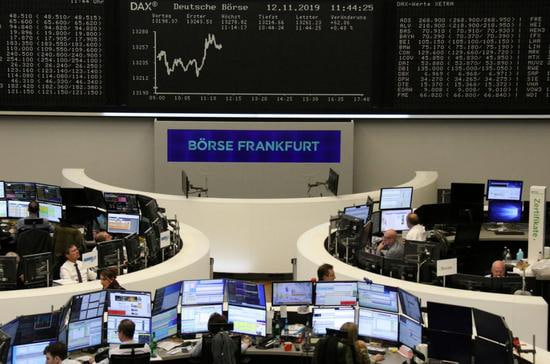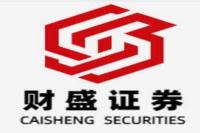Boosting State-Owned Enterprise Value: A Deep Dive into China's New Market Cap Management Strategy
Meta Description: China's State-Owned Enterprises (SOEs), market capitalization, value management, performance evaluation, strategic initiatives, 国务院国资委 (SASAC), improving SOE value, incentivizing executives.
Wow, buckle up, folks! China's just dropped a bombshell on the business world. The State-owned Assets Supervision and Administration Commission (SASAC), the big cheese overseeing all those massive state-owned enterprises (SOEs), has issued a brand-new set of guidelines aimed at supercharging the market capitalization of these behemoths. This isn't just some minor tweak, we're talking a complete overhaul of how these companies are managed and evaluated. Think of it as a game-changer, a seismic shift in how China's economic powerhouse operates – impacting everything from executive bonuses to long-term strategic planning. We're diving headfirst into this pivotal development, analyzing its implications and uncovering the potential for both explosive growth and unforeseen hurdles. Get ready to unravel the secrets behind this ambitious initiative and understand its profound consequences for investors, SOEs themselves, and the global economy. We'll be exploring the nuts and bolts of the new strategy, the challenges it might face, and the potential for truly remarkable results. This isn't just about numbers on a spreadsheet; it's about the future of Chinese business and its impact on the world stage. So grab your coffee, settle in, and let's get started!
Market Capitalization: The Heart of the Matter
The recent directive from the SASAC focuses squarely on improving market capitalization – the total value of a company's outstanding shares. This isn't just about boosting a number; it's a reflection of investor confidence, future growth potential, and overall corporate health. For SOEs, historically viewed as less agile and market-driven than their private sector counterparts, this shift represents a significant paradigm shift. The document explicitly states that market cap management is no longer a side project but a core strategic pillar. This signifies a deep understanding that in today's competitive global marketplace, market valuation is king.
The New Rules of the Game: Key Changes and Implications
The SASAC's guidelines aren't just suggestions; they're directives with teeth. There's a major emphasis on building robust, well-defined mechanisms for managing market value. This includes:
- Formalized Systems: SOEs are mandated to establish formal systems for tracking, analyzing, and improving their market capitalization. This goes beyond simply looking at the numbers; it requires a comprehensive understanding of market dynamics, investor sentiment, and competitive landscapes.
- Performance-Based Incentives: The most impactful change is the direct link between executive compensation and market value performance. This is a powerful incentive to prioritize market-oriented strategies and shareholder value. It means executives will no longer be judged solely on internal metrics, but on the success of their companies in the public market.
- Long-Term Vision: The document stresses the importance of viewing market cap management as a long-term strategic initiative, not a short-term fix. This is crucial for sustainable growth and building lasting investor confidence.
- Enhanced Transparency: Improving transparency and communication with investors is another key element. This involves more open and honest disclosure of financial information and strategic plans, fostering trust and attracting investment.
This isn't just about making SOEs more profitable; it's about fundamentally changing their corporate culture to be more responsive to market forces and investor expectations. It's a bold move, and its success hinges on effective implementation.
Challenges and Opportunities: Navigating the Path Ahead
While this initiative holds enormous potential, it also comes with its fair share of challenges.
- Resistance to Change: Implementing such sweeping changes within established organizations is never easy. Inertia and resistance to new approaches could slow down progress.
- Short-Term vs. Long-Term Focus: Balancing the pressure for short-term gains with the need for long-term strategic planning will be a delicate act. The temptation to prioritize quick wins over sustainable growth could undermine the initiative's long-term success.
- Measuring Success: Defining and measuring the success of these initiatives will require sophisticated metrics and careful analysis. Simply looking at market cap fluctuations might not capture the full picture.
- Global Economic Uncertainty: The global economic climate is a wild card. Geopolitical instability, inflation, and other external factors could impact market sentiment and the success of these efforts.
Despite these hurdles, the potential rewards are significant. Increased market capitalization can unlock numerous benefits, including:
- Access to Capital: Higher valuations make it easier for SOEs to raise capital for expansion and innovation.
- Enhanced Competitiveness: Stronger market positions allow SOEs to compete more effectively on the global stage.
- Economic Growth: The overall effect on the Chinese economy could be substantial, contributing to stronger GDP growth and improved investor confidence in the country.
The SASAC's Role: Oversight and Accountability
The SASAC's role in overseeing this initiative is paramount. Its success will depend on the SASAC's ability to provide effective guidance, monitor progress, and hold SOEs accountable. This will require a robust oversight framework and clear performance indicators. The SASAC also needs to ensure that the initiative is implemented fairly and consistently across all SOEs, avoiding favoritism or bias.
The SASAC's commitment to this initiative is a clear signal of its intent to modernize and strengthen China's state-owned sector. This is a move towards a more market-oriented and globally competitive economy, with significant implications for the future of Chinese business.
Frequently Asked Questions (FAQs)
Q1: What are the key performance indicators (KPIs) for measuring the success of this initiative?
A1: KPIs will likely include changes in market capitalization, investor sentiment (reflected in stock prices and trading volume), improvement in corporate governance, and increased transparency. The SASAC will likely develop a more comprehensive set of KPIs over time.
Q2: How will the SASAC ensure that the focus on market capitalization doesn't overshadow other important aspects of SOE performance, such as social responsibility?
A2: The SASAC will likely emphasize a balanced approach, incorporating Environmental, Social, and Governance (ESG) factors into performance evaluations. Market cap is important, but it shouldn't come at the expense of social responsibility.
Q3: Will this initiative lead to increased privatization of SOEs?
A3: It's unlikely the initiative will directly trigger widespread privatization. However, improving market capitalization could make some SOEs more attractive to private investors in the future through strategic partnerships or other collaborations.
Q4: What are the potential risks associated with tying executive compensation directly to market capitalization?
A4: The risk is that executives might prioritize short-term gains over long-term sustainable growth. This is why the emphasis on long-term strategic planning is crucial. Robust oversight and well-defined performance metrics will help mitigate this risk.
Q5: How will this initiative impact foreign investors' perception of Chinese SOEs?
A5: The initiative should improve foreign investors' confidence in Chinese SOEs by demonstrating a commitment to transparency, good governance, and market-oriented strategies. This could lead to increased foreign investment in Chinese SOEs.
Q6: What is the estimated timeline for implementing these changes?
A6: The timeline isn't explicitly stated in the document, but it's likely to be a gradual process that unfolds over several years. The SASAC will likely monitor progress closely and make adjustments as needed.
Conclusion: A Bold Step Towards a Modernized Economy
The SASAC's new initiative represents a bold and potentially transformative step in the evolution of China's state-owned sector. While the path ahead is fraught with challenges, the potential benefits – stronger, more competitive SOEs, increased economic growth, and a more market-oriented economy – are too significant to ignore. The success of this initiative will depend on effective implementation, robust oversight, and a commitment to long-term strategic thinking. It’s a high-stakes game, but if played correctly, it could reshape the landscape of Chinese business for years to come. And that, my friends, is something worth watching closely.



